#1 Tar spot of corn
Who: Tar spot of corn, Phyllachora maydis
What: An emerging disease threat to corn production in Missouri. Tar spot manifests itself with development of black, tar-like spots (stroma) on the leaf, sheath, and husk surfaces. Stroma can be surrounded by tan, lesion-forming "fisheye" shapes (Figure 1). Yield losses as high as 40% have been reported in some Midwestern fields. Researchers are working to determine what commercially available corn lines may offer resistance to tar spot.
When: Spores spread primarily by wind and rain splash at temperatures between 60 to 70° F. The pathogen prefers high humidity and prolonged periods of leaf wetness of 7 hours or more.
Why: The black, tar-like stroma reduce photosynthetic area during critical grain fill stages and lead to premature plant death.
Where: Tar spot of corn has been confirmed in 9 Missouri counties since 2019 (Figure 2) and continues to be detected in new counties each season. The disease has been observed in all counties in Iowa and most counties in Illinois as well as in other north central areas including regions of Wisconsin, Ohio, Michigan, and other states. Counties where tar spot has been reported in previous years are at higher risk of tar spot development in the coming season.
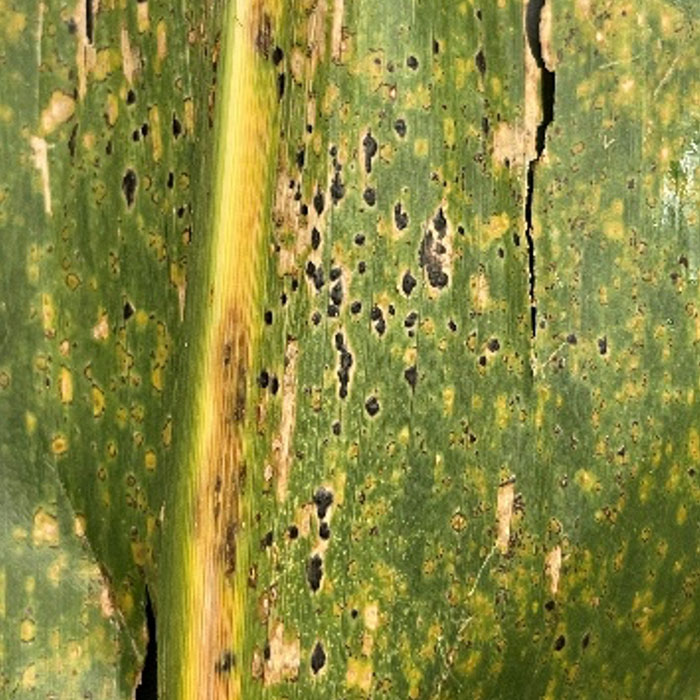
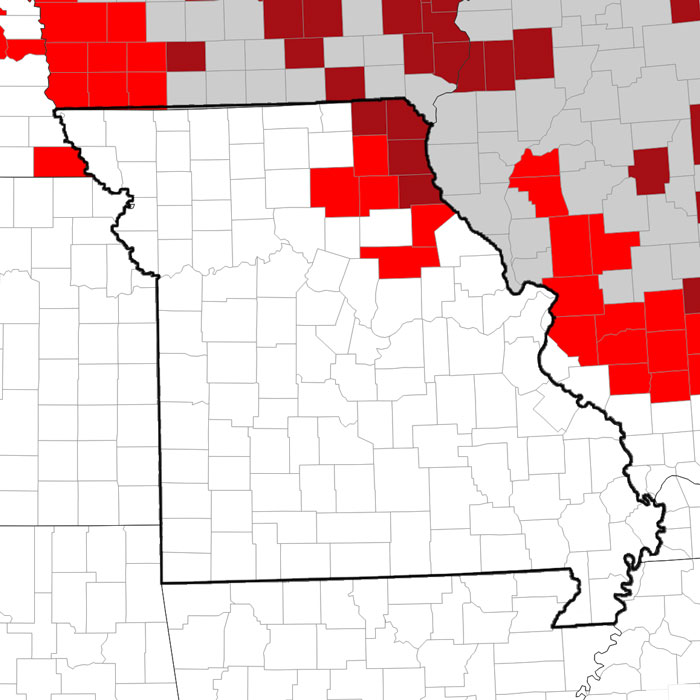
#2 Cercospora leaf blight of soybean
Who: Cercospora leaf blight (CLB) is a disease of soybeans that is also linked to purple seed stain (PSS).
What: CLB affects soybean leaves, petioles, and stems. PSS affects soybean seeds. Both diseases have direct implications on crop yield and quality in the Midwest. CLB causes symptoms that can resemble early senescence. Currently there no commercially-available soybean varieties that offer a high level of resistance.
When: Infection generally occurs during flowering although symptoms appear later, around the late R4 stage in the upper canopy and further into the growing season.
Why: Cercosporin, a toxin, accumulates in the leaf tissue, reacts with sunlight and causes a bronzing of the leaves (Figure 3). This results in a loss of photosynthetic area. These leaves often drop prematurely hence the resemblance of early senescence. CLB also has been linked to PSS in soybean seeds (Figure 4).
Where: Incidence and severity of CLB is increasing further north into Missouri than previously reported. Just how widespread the distribution of the CLB pathogen complex is in Missouri is unknown, though reports of severe CLB are on the rise throughout the state.
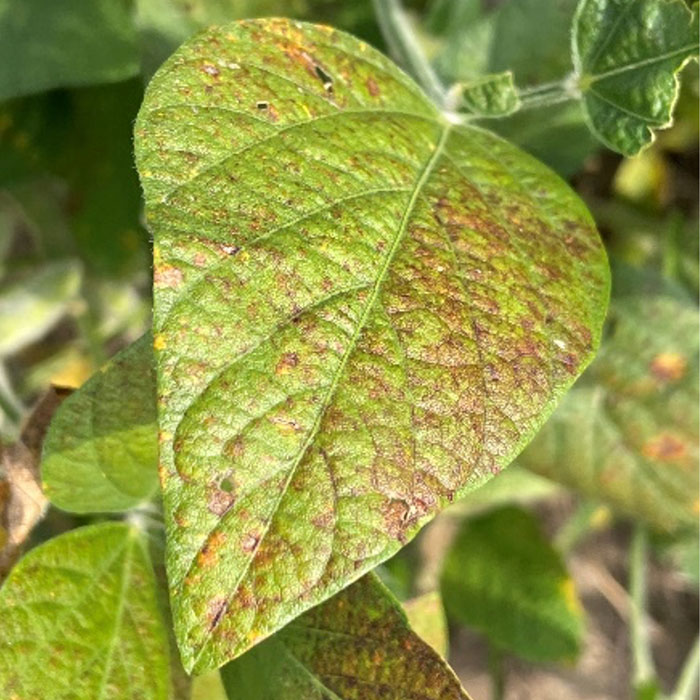
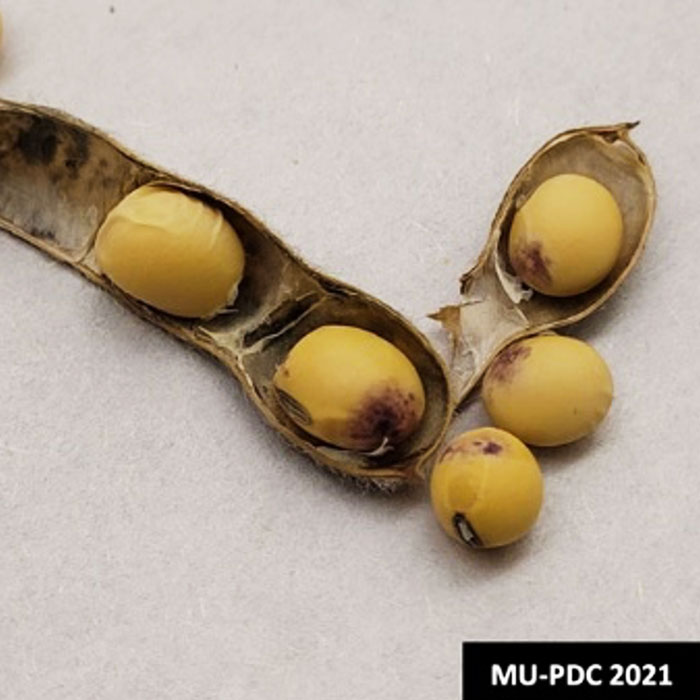
#3 Phytophthora root rot of soybean
Who: Phytophthora root rot (PRR), caused by the pathogen Phytophthora sojae, is a destructive disease of soybean.
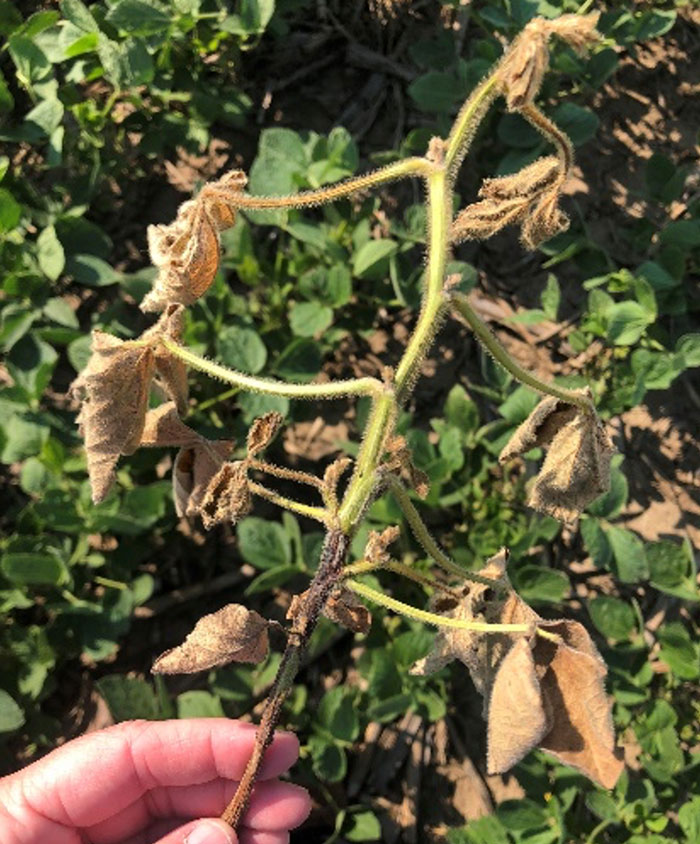
What: PRR can affect soybean at many different growth stages. Infected seed can rot before germination and result in stand loss. Seedlings that are infected may die just before or after emergence. After seedlings are established, infected plants may not show symptoms until later during the season or infected plants may die throughout the season, depending largely on environmental conditions and severity of the infection. While this disease is not new to Missouri, wetter springs and earlier planting dates are likely to increase disease incidence.
When: Infection is most favorable in poorly-draining soils with high moisture. Zoospores are the main source of root infection, are transported in soil water, and are attracted to seed and roots. Soil temperatures around 80° F are optimal for infection.
Why: PRR causes severe damage of plants that reduce the amount of seed produced or result in plant death (Figure 5). In Missouri, soybean yield losses are typically around 10%; however, losses can be much worse in the event of severe infection. Disease management must be preventative. Once infection occurs, there are no control measures. Seed treatments can serve as barriers to early-season infection but extended wet conditions will likely reduce efficacy.
Where: This disease can be found throughout Missouri when conditions are favorable. Once the disease is present in a field, the spores can survive for many years in the soil.